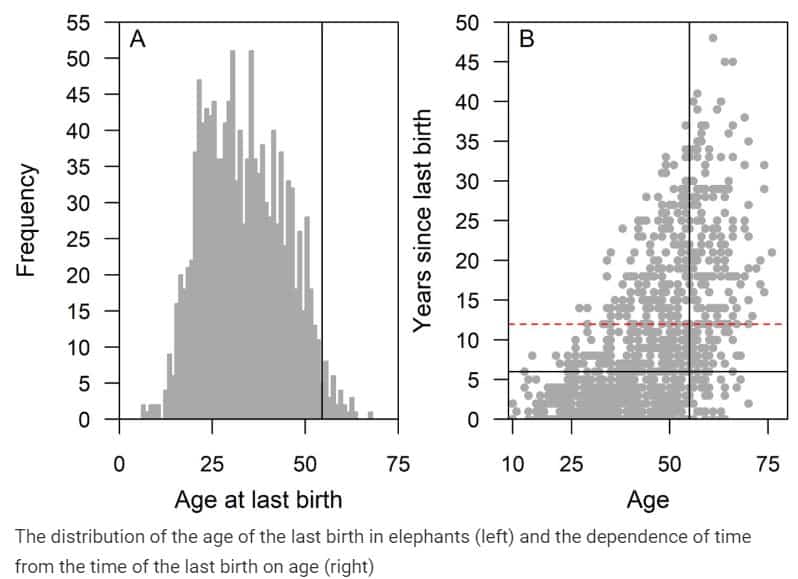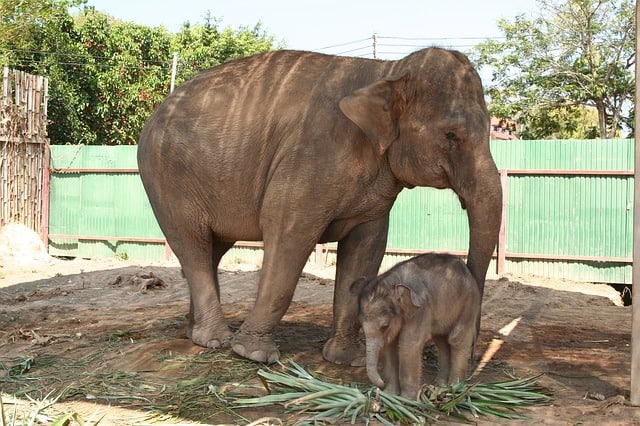Observing the life and reproduction of nearly four thousand female Asian elephants, scientists found signs of menopause in them. In other words, elephants live a significant part of their lives after breeding has ended. In terms of the number of years that pass between the last birth and death, elephants are now second only to a few species of cetaceans and humans.
There are still very few species in which individuals continue to exist after they have lost the ability to reproduce. This property is considered to be very rare, as it is not clear how it could gain a foothold in the course of evolution. In humans, for example, long menopause – the period after the loss of fertility – is now explained by the “grandmother hypothesis”. She suggests that menopause can be beneficial in the long run: those individuals who do not reproduce can follow the young – not their own, but their children. However, if it may be fair for a person, it is much more difficult to apply such a hypothesis to other animals.
In order to reliably determine whether a particular type of menopause is present, it is not enough to measure the average age of the end of reproduction, since it can differ in individual to individuals. Researchers use a complex parameter called “post-reproductive representation” (PrR). This is the percentage of all years of the life of females in the population that they spend after the end of breeding. To calculate it, it is necessary to calculate all the years that females live after the end of breeding, and divide them by the number of years lived after the start. In cetaceans, for example, PrR can be from 0.15 to 0.30 – that is, 15-30 per cent of all years of the life of females in the population goes through menopause. In humans, this figure is even higher – more than 50 per cent.
Simon Chapman of the University of Turku and his colleagues from the UK and Myanmar counted PrR for Asian elephants. Researchers have worked with the largest population of elephants in captivity – animals used in Myanmar to remove felled trees. Scientists analyzed data on 3,802 females who have worked at the company since the 1950s. In doing so, they separately took into account elephants that were born in captivity, as well as those caught at large – the age of the latter is more difficult to determine reliably.
Scientists found that there is no unambiguous threshold beyond which breeding stops: elephants continued to give birth to cubs, just did it less often with age. The oldest animals were elephants aged 69 (born in captivity) and 76 (caught) years, the most recent births they recorded at 55 and 64 years, respectively. It is not known whether this age is the limit, but among elephants over 55, 65 per cent “missed” at least one birth, meaning they did not give birth during the time it takes to take out a baby elephant.

The value of PrR in elephants was quite high: 0.162 for the entire population and 0.207 for elephants born in captivity. Above only a pair of killer whales, narwhal, beluga and human. However, in order to reliably verify the presence of menopausal in elephants, researchers will need to monitor the number of hormones in their blood, as well as count the eggs in the ovaries of dead animals, which is quite difficult to implement so far.
PrR in the Asian elephant was not only higher than that of his African counterpart, but also higher than in previous works involving Asian elephants, where he was about 0.13. The authors note that this may depend on the length of the study. They calculated that if they had taken the data for fewer years, the PrR rate would have fluctuated quite strongly – from 0 to 0.4 – and only by the end of the observations it had reached the plateau. This may mean that for many animals we simply do not have enough data – it may be possible to detect an analogue of menopause in other species over time.
